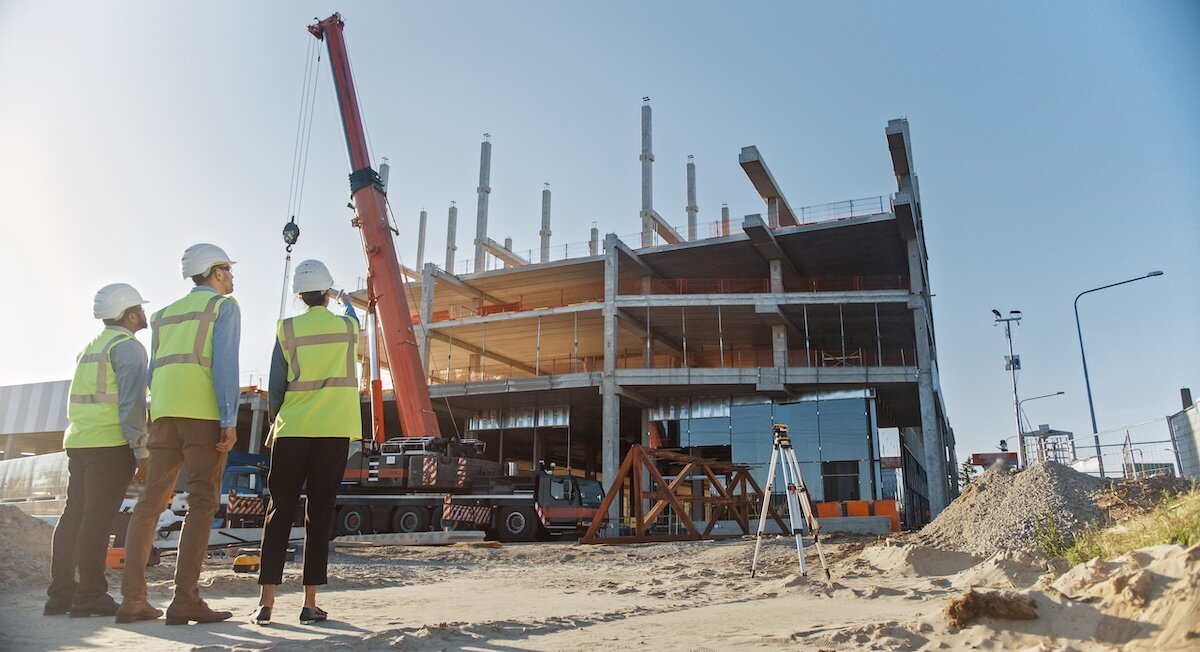Understanding Underwriting in Commercial Real Estate
Learn


Underwriting is a key part of every commercial real estate deal. Whether you’re an investor seeking financing, a lender determining risk, or a broker structuring a deal, understanding underwriting is essential. The core purpose of underwriting is to help assess the potential risks and rewards tied to a property, ensuring smarter investment decisions and stronger financial outcomes. For both borrowers and lenders, underwriting is the foundation that supports deal success.
What is Underwriting?
Underwriting is the process of evaluating financial risk by analyzing key factors before approving a loan, insurance policy, or investment. Underwriters carefully assess data to determine whether the potential reward justifies the risks involved.
While underwriting is often discussed in the context of real estate, it’s also a critical process in fields like insurance (where it assesses client risk) and investing (where it helps evaluate a company’s financial strength before committing capital).
Whether in real estate transactions, insurance underwriting, or investment underwriting, the goal remains the same: to make informed decisions that minimize financial exposure and maximize potential returns.
What is Underwriting in Commercial Real Estate?
In commercial real estate, underwriting is the in-depth financial and risk evaluation of a property, the borrower, and the broader market. It’s a process that digs into property income and expenses, borrower qualifications, market trends, and comparable sales to forecast future performance and assess risk.
Strong underwriting matters because it serves several critical functions: it helps lenders minimize the risk of borrower default, supports investors in projecting potential returns, and provides a data-driven foundation for smarter acquisition, financing, and exit strategies.A thorough underwriting process helps uncover risks early, set realistic terms, and support stronger long-term outcomes for everyone involved.
In short, underwriting turns guesswork into strategy.

Key Components of Commercial Real Estate Underwriting
Effective underwriting in commercial real estate means examining every part of a deal with a critical eye. Underwriters examine both the property and the people behind the deal to identify risks that could affect performance. Typically, the underwriting process focuses on five major areas that shape a deal’s risk profile and return potential.
Borrower Review
Before approving financing, underwriters closely review the borrower's financial history, creditworthiness, liquidity, and real estate experience. They evaluate tax returns, personal and business balance sheets, debt obligations, and past success with similar property types. A strong borrower with relevant experience and solid financials reduces the risk of default and improves the overall strength of the deal.
Property Review
Underwriting also focuses heavily on the property itself. Key factors include location quality, tenant roster and lease terms, historical and projected rental income, operating expenses, and any upcoming capital expenditure needs. Properties with stable cash flow, creditworthy tenants, and minimal deferred maintenance are seen as safer bets.
Market Conditions
No property exists in a vacuum. Underwriters research broader market dynamics, studying supply and demand trends, comparable property sales, local cap rates, and vacancy rates. A property might look strong on paper, but if it's in a declining market, the risks increase. Solid market fundamentals support both rental growth and future resale value.
Loan Terms & Risk Metrics
Financial ratios provide a snapshot of deal health. Underwriters calculate important metrics like Debt Service Coverage Ratio (DSCR), Loan-to-Value (LTV) ratio, debt yield, and cap rate to ensure the property's income can comfortably cover debt payments and that the leverage levels are within lender or investor guidelines.
Exit Strategy Assumptions
Finally, underwriters consider how investors or lenders plan to exit the deal. They evaluate projected resale values, assumed exit cap rates, and timelines to ensure that the exit assumptions are realistic based on current and forecasted market conditions. A sound exit strategy helps protect returns and reduces risk at the end of the investment period.

Underwriting an Existing Property vs. a Development
When it comes to commercial real estate, underwriting an existing property is very different from underwriting a ground-up development project. Understanding these differences is crucial - especially if you're wondering how underwriting works for CRE development compared to stabilized assets.
- For an existing property, underwriters rely on real, historical data. They analyze current lease agreements, tenant stability, operating expenses, rental income, and property maintenance records. The goal is to verify that the asset’s cash flow is stable and sustainable, making the underwriting process more straightforward and less speculative. With an existing property, the risk is lower because there’s already a track record of performance.
- In contrast, underwriting a commercial development involves much more projection and assumption. Since the property hasn’t been built yet - or is newly delivered - underwriters must estimate future lease-up timelines, achievable market rents, construction costs, and the overall timeline to stabilization. This introduces significant risk around construction delays, cost overruns, or slower-than-expected tenant absorption, all of which can dramatically affect financial returns.
Lenders approach these scenarios differently. For stabilized assets, they focus on current performance metrics like debt service coverage ratio (DSCR), tenant diversification, and maintenance history. For development projects, lenders scrutinize the developer’s track record, the reliability of pro forma assumptions, pre-leasing commitments, contractor bids, and contingency planning for unexpected costs or timeline shifts. Because of the added risk, development projects typically require more borrower equity and stricter risk controls.
Knowing how underwriting varies between existing properties and new developments helps CRE investors and borrowers prepare stronger, more realistic proposals - and better manage risk across different project types.

The Commercial Underwriting Process: Step-by-Step
Commercial real estate underwriting follows a careful process designed to evaluate risk, verify key assumptions, and protect both lenders and investors. Here’s a typical underwriting workflow:
- Loan or Investment Application: The borrower or investor submits an application detailing the property, financial history, intended use of funds, and business plan.
- Preliminary Borrower and Property Review: Underwriters conduct an initial review of the borrower’s credit profile, experience, and the basic property details to screen for major red flags.
- Detailed Underwriting Analysis: A deep dive into financials begins, including the borrower’s tax returns, operating statements, rent rolls, expense records, and cash flow projections.
- Property Appraisal and Third-Party Inspections: Licensed appraisers assess the property's value, while third-party firms may perform inspections or environmental reviews to uncover hidden risks.
- Market and Risk Review: Underwriters analyze comparable property sales, current lease rates, local supply and demand trends, and broader market conditions to validate assumptions.
- Structuring Loan Terms or Investment Recommendations: Based on the findings, lenders or investors structure terms (such as loan amounts, interest rates, or equity requirements) that match the risk profile.
- Final Approval Decision and Closing: After final risk checks, the deal moves to approval committees or decision-makers, leading to closing if all conditions are met.
Why Underwriting Matters for CRE Investors
At the end of the day, strong underwriting is one of the best defenses investors have for protecting their capital.
By carefully analyzing risk factors - from tenant quality to market trends - underwriting helps uncover potential issues before they impact returns. Accurate modeling and realistic projections are essential not just for securing financing, but for building long-term investment success. Even if you’re working with lenders or advisors, knowing the underwriting process helps you spot red flags and make better calls, faster.
In a competitive market, underwriting isn't just extra paperwork; it's a strategic advantage.

Tips for Stronger Underwriting Outcomes
- Keep financial documents accurate, current, and well-organized. Lenders and investors rely heavily on up-to-date financials to assess risk. Missing or outdated information can delay the underwriting process and raise concerns with lenders. Organizing key documents like rent rolls, operating statements, and tax returns shows professionalism and builds confidence with underwriters.
- Align underwriting assumptions with real, local market data. Basing rental rates, expense estimates, and vacancy rates on current, local comps from an accurate source helps ensure your projections are realistic. Overly optimistic assumptions can make deals appear stronger than they are, leading to challenges during financing or resale.
- Be conservative in income projections and thorough in expense forecasts. When underwriting, it’s better to be cautious than overly optimistic. Using conservative rent assumptions and accounting for all potential expenses (including capital reserves and future maintenance) helps protect your downside and strengthens your credibility.
- Leverage CRE underwriting software or consult experienced analysts when needed. Sophisticated underwriting models can uncover risks and opportunities that basic spreadsheets might miss. When in doubt, working with an experienced underwriter or using professional-grade software ensures your analysis is thorough, market-aligned, and defensible to lenders or partners.
Common Underwriting Terms Explained
- Net Operating Income (NOI): Total property income minus operating expenses, before debt service.
- Cap Rate: A property's NOI divided by its purchase price or value, expressing investment yield.
- DSCR (Debt Service Coverage Ratio): NOI divided by total debt payments; shows if a property's income covers loan obligations.
- LTV (Loan-to-Value): Loan amount divided by appraised property value; measures leverage risk.
- Exit Cap: The cap rate applied to a property's future resale value projection.
- Stabilization: The point when a property reaches target occupancy and income levels after lease-up.

Underwriting in 2025: Trends to Watch
As market conditions continuously shift, the CRE underwriting landscape is also constantly evolving. In 2025, several key trends are shaping how lenders, investors, and underwriters evaluate deals:
- Stricter lending standards. After years of interest rate hikes and tighter monetary policy, lenders are applying more conservative underwriting criteria. Expect lower maximum LTV ratios, higher required DSCR thresholds, and increased scrutiny of borrower financials to manage downside risk.
- Stronger emphasis on tenant quality and lease structures. Lenders and investors are looking beyond occupancy rates to evaluate the strength of tenant rosters. Longer lease terms, strong credit tenants, and diversified tenant mixes are increasingly critical factors during underwriting to ensure stable cash flow.
- More underwriting tools now use AI and automation to speed up financial analysis and spot risk patterns. Technology is playing a bigger role, with AI-powered underwriting platforms helping streamline financial analysis, risk modeling, and property evaluation. These tools allow underwriters to process larger volumes of data faster and spot risks or opportunities that might otherwise be missed.
- Focus on property resilience and adaptability. Environmental risks, building flexibility, and property resilience are getting more attention. Properties that can adapt to evolving tenant needs - or withstand environmental events - are being underwritten more favorably.
Why Underwriting Is the Foundation of Smart CRE Decisions
Underwriting isn’t just a step in the process - it’s one of the most powerful tools investors and CRE professionals have to reduce risk and uncover opportunity. A strong underwriting process helps evaluate borrower strength, property fundamentals, and market dynamics, providing a clear path toward smarter, more profitable decisions. By understanding and embracing underwriting, investors can confidently move forward with deals that align with their goals and long-term success.
Searching for deeper insights to support your CRE strategies? Crexi provides a range of practical resources, including market reports and powerful data tools in Crexi Intelligence to help you set the stage for investment success.









